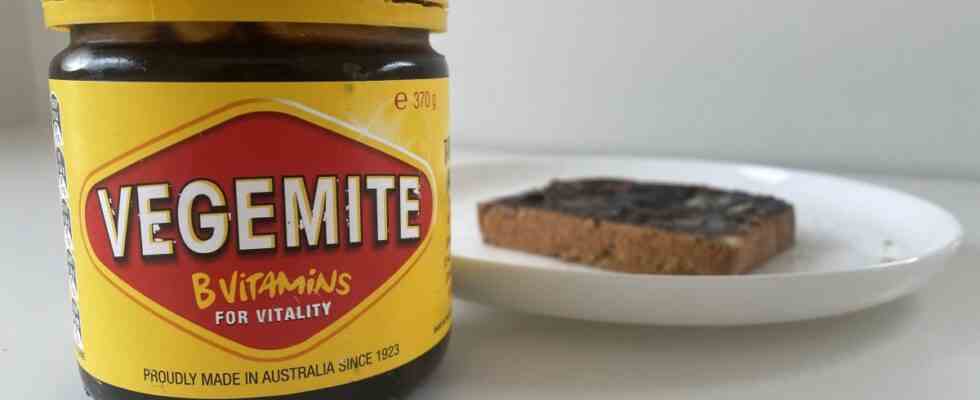The stuff is dark brown, has the consistency of heated chain grease, and tastes just like you would imagine it on your tongue. Not really like a food, but like something left over from making jet fuel at the refinery.
Australians, of course, cannot live without the substance. “Vegemite” is the name of the paste, which can only be appreciated by those who have been fed it since infancy and have smeared it on toast with every breakfast since then – very thin, of course, that’s important.
Everyone else just sees the dark brown paste with the salty-bitter taste as a spread made from yeast extract. But for Australians, Vegemite is much more: a cultural icon of their country, as formative for the image of the fifth continent as kangaroos, Crocodile Dundee and the Sydney Harbor Bridge. Appreciating Vegemite is an unchanging hallmark by which Australians recognize their peers. “Do you speak my language?”, sings the band Men at work in Australia’s unofficial national anthem “Down Under”: “He just smiled and gave me a Vegemite sandwich…”
The Australian Medical Association declared the yeast paste to be particularly healthy – despite the high salt content
“Proudly made in Australia since 1923” is what it says on the bright yellow labels of the Vegemite jars, of which more than a billion have since been sold – mainly due to the peculiar taste where Australians live. But the history of this all-Australian cultural product began a year earlier: a hundred years ago, a young chemist by the name of Cyril Percy Callister in Port Melbourne set about making a spicy extract from the yeast leftovers from the local Carlton brewery. His employer Fred Walker wanted to build on the success of the paste “Marmite” from the motherland, with which the English, derided as poms, torment themselves to this day – and which a self-respecting Australian would never touch because of this origin.
In Australia, the new product, initially marketed with the simple name “Pure Vegetable Extract”, was a flop. A naming contest the following year didn’t change that, and Walker’s daughter chose the name “Vegemite” as the winner from the entries. It wasn’t until the 1930s that a masterful marketing strategy got Australians to smear the actually inedible product on their white bread: Walker, who had teamed up with the US company Kraft to market its processed cheese, included cheese with every pack add a sample of Vegemite.
The decision of the Australian Medical Association, which was dubious in view of the extremely high salt content, to declare the yeast paste particularly healthy because of its high vitamin B content, did the rest to cause sales of the to explode. had in World War II every Australian Army Digger to strengthen Vegemite in knapsacks, at home the tax had to be rationed.
Even after that, the paste was used with elaborate advertising to women, men and, above all, children. A commercial song from the fifties burned itself so deeply into the collective psyche of Australians that it even shaped their vocabulary: anyone who is satisfied with themselves and the world has been a “Happy Little Vegemite” ever since.
And because that is the case, they are now paying tribute to the inventor Cyril Callister: Just in time for the hundredth anniversary, a Vegemite museum opened in an abandoned gas station in his birthplace Beaufort. Admission is free, the bakery next door serves, yes sir: Vegemite cake.

